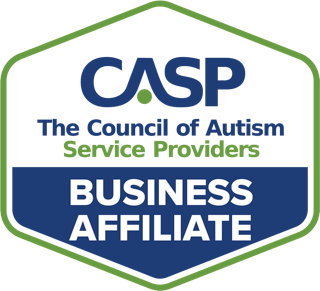The live webinar for part 3 of our MNC (Medical Necessity Criteria) Series will take place on Thursday, June 20th, 2019 at 1:00 PM ET.
We will also be unveiling our brand new, industry-first Medical Necessity Criteria Assessment Tool for ABA Services!
Be one of the first to see it in action by attending the webinar.
This piece is based on our recent webinar presented by Dr. Diana Davis-Wilson, DBH, LBA, BCBA, who is a licensed behavior analyst, with several years of experience providing consultation and training to families, school districts, and organizational personnel nationwide. She holds a Doctorate of Behavior Health with an emphasis on integrated health care management and is currently the Chief Executive Advisor for Aspen Behavioral Consulting.
As clinicians, Applied Behavior Analysis (ABA) providers seek to improve the lives of their patients by offering treatments that are both beneficial and medically necessary.
Factors To Consider
However, the needs of patients are just one of the many factors that need to be considered in health care.
There are also the needs of health plans to consider.
This is usually what ABA providers refer to as the preauthorization process where providers:
- create treatment plans
- follow standards
- send their treatment plans to health plans
Throughout this process, health plans analyze these treatment plans to determine whether they satisfy medical necessity criteria.
Health plans are also obligated to consider medical necessity as a legal concept that follows and adheres to specific guidelines and coverage policies.
Some clinicians don’t factor this perspective into their treatment plans and as a result, struggle to comprehend what they should deliver to health plans.
In a recent Rethink Behavioral Health (RethinkBH) webinar, Dr. Diana Davis-Wilson, the Chief Executive Advisor for Aspen Behavioral Consulting in Arizona, outlined a few ways ABA providers can navigate the world of health care and “learn the language of health plans”.
The First Step
The first step, she says, is to understand how medical necessity is viewed by clinicians, health plans, and legal entities. “When it’s unclear as to what medical necessity is or when we don’t have the data to support the typical avenues for developing medical necessity, it becomes challenging for us to present our cases to health plans,” says Davis-Wilson
When it’s unclear as to what medical necessity is or when we don’t have the data to support the typical avenues for developing medical necessity, it becomes challenging for us to present our cases to health plans
Dr. Diana Davis-Wilson, DBH, LBA, BCBA Behavior Analyst Tweet this
Health plans are usually responsible for large populations and must make their decisions based on the interests of the majority.
This is often unique to ABA providers, who commonly look at priorities and patient care from an individual scope.
When an individual purchases a health plan, the policies are driven by many things; one of which is the population itself and the majority.
Therefore, a health plan’s job is to develop guidelines and coverage policies specific to a variety of different components outside of the individual lens.
Additional Considerations
Considerations to coverage policies include an intensive review of available documentation pertaining to the following indicators:
- Disease burden
- Public or provider interest
- Controversy
- Variation in care
- Cost
- Quality
- Effectiveness of research
- Potential impact to the entire population
To the untrained ABA provider’s eye, these factors may not have a significant impact.
But from the perspective of a health plan, the following can benefit a majority of individuals with health plans, not just singular patients:
- Decreasing disease burden
- Reducing long-term costs
- Improving quality of care
- Improving effectiveness of research
When ABA providers fail to realize this, medical necessity reviews can become problematic for them and health plans.
ABA providers can also experience a breakdown in communication with health plans that must satisfy the needs for a majority within populations they serve.
Primary Goals
But at the very heart of the matter, health care will always have three main goals.
“This is better known as the triple aim”, says Davis-Wilson, and provides three objectives:
- To improve patient care and the patient experience
- To improve the health of populations by aiming for continuous improvement to the quality of care
- To reduce the future per capita cost of health care by allowing individuals to obtain preventive services and care prior to the presence or discovery of certain illnesses and diseases
So where does medical necessity come in, and how can we translate it into a language that we understand?
According to Davis-Wilson, medical necessity means that the services an ABA provider carries out is for the purpose of evaluating, diagnosing or treating an illness, injury, disease or its symptoms.
It is expected to be in accordance with the accepted standards of practice and should be clinically appropriate, efficient and cost-effective.
Measuring progress is an essential component as to whether treatment is considered efficient and cost-effective. Most plans seek to reduce the duplication of services and prevent contradictions that may be costly.
Health plans are also committed to monitoring client progress individually and as a whole for populations, thus moving them closer to their goal of reducing the future per capita cost of health care.
In essence, the more ABA providers learn to think of the whole as a sum of the individual parts, the better they will be equipped to create treatment plans and satisfy criteria in a way that health plans can understand.
Legal Components
The legal aspect of what health plans require is also very rarely discussed but plays an essential role in how health plans view medical necessity.
Many health care contracts include agreements that state that a plan will provide coverage only for services that are deemed reasonable and necessary, which is up to the discretion of health plans.
This also means that the progress an individual makes over the course of a treatment plan is more likely to be approved by health plans when it’s meaningful to overall outcomes for majorities within populations and supported by research.
When a treatment is supported by research, health plans can justify compensation for services provided and satisfy reductions and improvements to indicators such as disease burden, cost, quality, effectiveness of research and the potential impact on majorities within populations.
Putting It All Together to Optimize Treatment Plans for Approval
Yet, these are just some of the many ways ABA providers can become experts at decoding medical necessity criteria and documentation for health plans.
Learning to speak the language requires careful attention to detail and a more holistic perspective of health care in general.
RethinkBH provides an intuitive and comprehensive solution to scale your ABA business and ensure client success.
Our one-stop-shop platform offers both Clinical and Practice Management tools along with RBT Training, VB-MAPP licenses, and more than 1500 resources/materials as curriculum pieces.
Schedule a demo today at your convenience!










